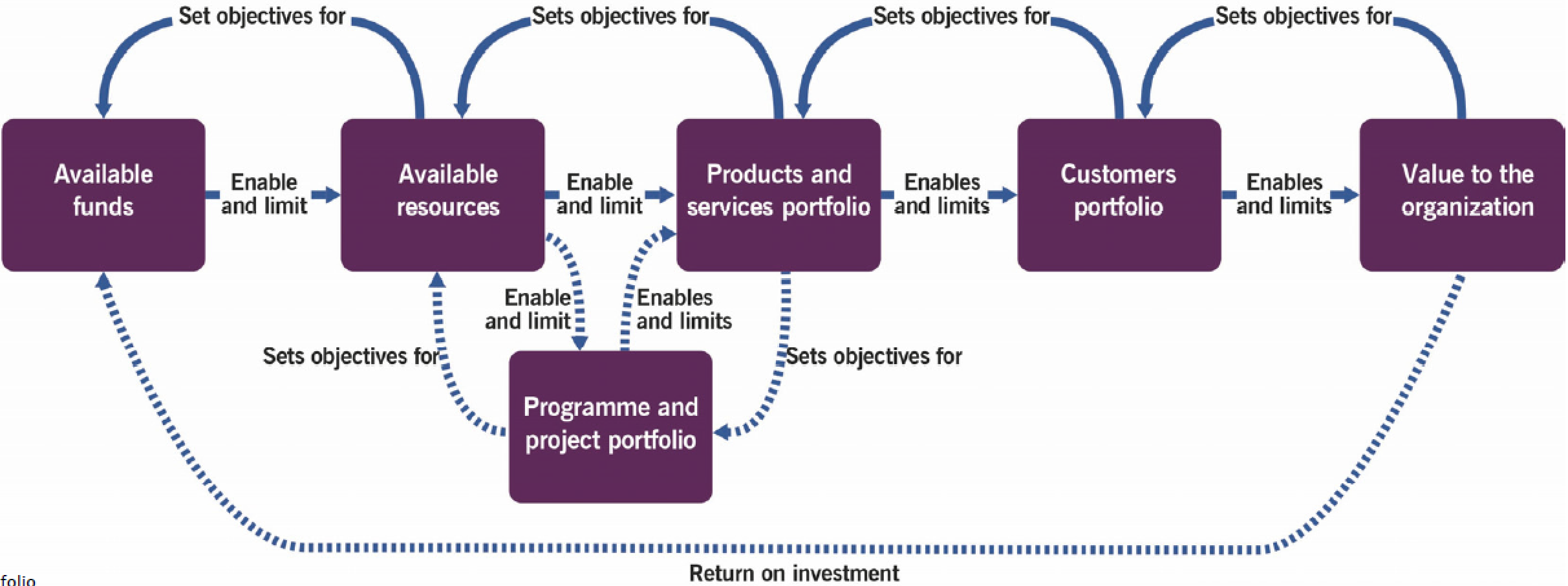ITIL 4 Strategic Leader Certification Course: Practices - Portfolio Management
Purpose: to ensure that the organization has the right mix of programs, projects, products, and services to execute the organization’s strategy within its funding and resource constraints
Portfolio: a collection of assets into which an organization chooses to invest its resources in order to receive the best return
Allocate, deploy, manage resources
Portfolio types:
- Product and service portfolio: complete set of products and services, shows commitments and investments, represents contractual commitments, new development, improvement
- Program and project portfolio: manage and coordinate projects (objectives met, cost constraints maintained, no duplication, stay within scope, resources available)
- Customer portfolio: reflects commitment to service customer groups and market spaces; ensures relationship between business outcomes , customers, and services is well understood; may influence product and service portfolio or the program and project portfolio
Other portfolios can exist anywhere in the organization, it’s about managing resources. Purpose is to achieve optimal return on investment from assets
Tightly related to service financial management (fiscal oversight)
1. Portfolios enable ROI

2. Practice success factors (PSF)
Two PSFs for SFM:
- Ensuring sound investment decisions for programs, projects, products, and services within the organization's resource constraints
- Ensuring the continual monitoring, review, and optimization of the organization's portfolios
2.1 Sound investment decisions
To avoid conflicting priorities and ensure transparency:
- Portfolios ensure stakeholder perspectives are included and prioritized; important initiatives are resourced before other initiatives are addressed
- Crucial for strategic alignment, strategy management provides the criteria so to achieve organizational objectives
- Criteria should be transparent and consistent: PM provides feedback to SFM, StM, RM where those practice initiatives included/used in decision making
Portfolios are communication tools for stakeholders:
- Should have a portfolio owner ensuring accurate, up-to-date information: owner reviews, prioritizes, updates portfolio regularly)
- Use four dimensions to understand organizational resources
Continuous prioritization and reprioritization
2.2 Continual monitoring, review, optimization
Not enough to just identify the next promising investment: monitor to ensure expected value achieved (fail to deliver or delivers but no longer aligned with organizational strategy)
Regularly review:
- Ensure proper distribution of resources or investments in new opportunities
- Use a defined set of criteria to track, assess, and validate the value realization of a portfolio item (function, fiscal, performance, image, reputation, moral, customer satisfaction…)
- Use a template so a comparison across portfolio items can be made
Investment health reports:
- Results in optimization of portfolios – consider underperforming items, exceptions
- Intervene based on strategic impact: actions include increasing the investment, retire a service
Go back to ITIL 4 Strategic Leader Certification Course: Practices to finish this chapter or to the main page ITIL 4 Strategic Leader Certification Course.
Interesting Management
-

Part 1: A good manager, better team motivation, better team productivity, better team results
When you are managing a team, “how to be a good manager” is the “must”...
-

Report optimization, increase your time management
As manager, I am doing many reports, even when I was an ITIL consultant, I still needed to do many reports...
-

Tools to get your ITIL intermediate certifications, the missing 15 points for the ITIL 4 Managing Professional
ITIL V3 is going to be obsolete...
-

The importance of the first customer meeting for the service
Managing an IT service when I start a new company is not an easy task, particularly true, if the service...



